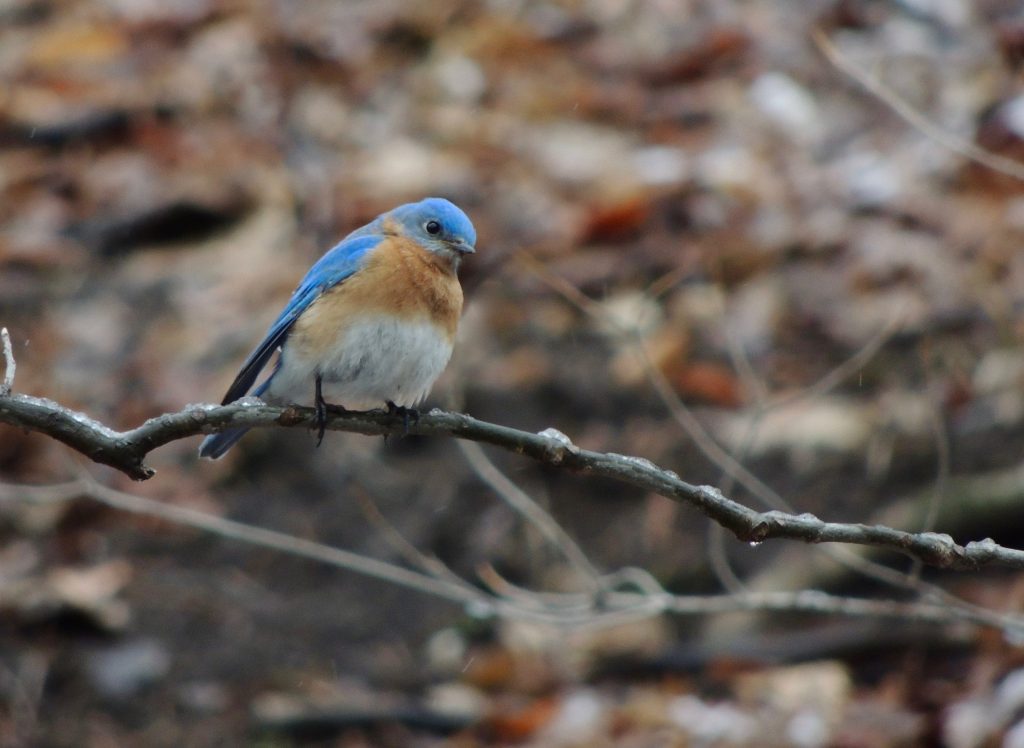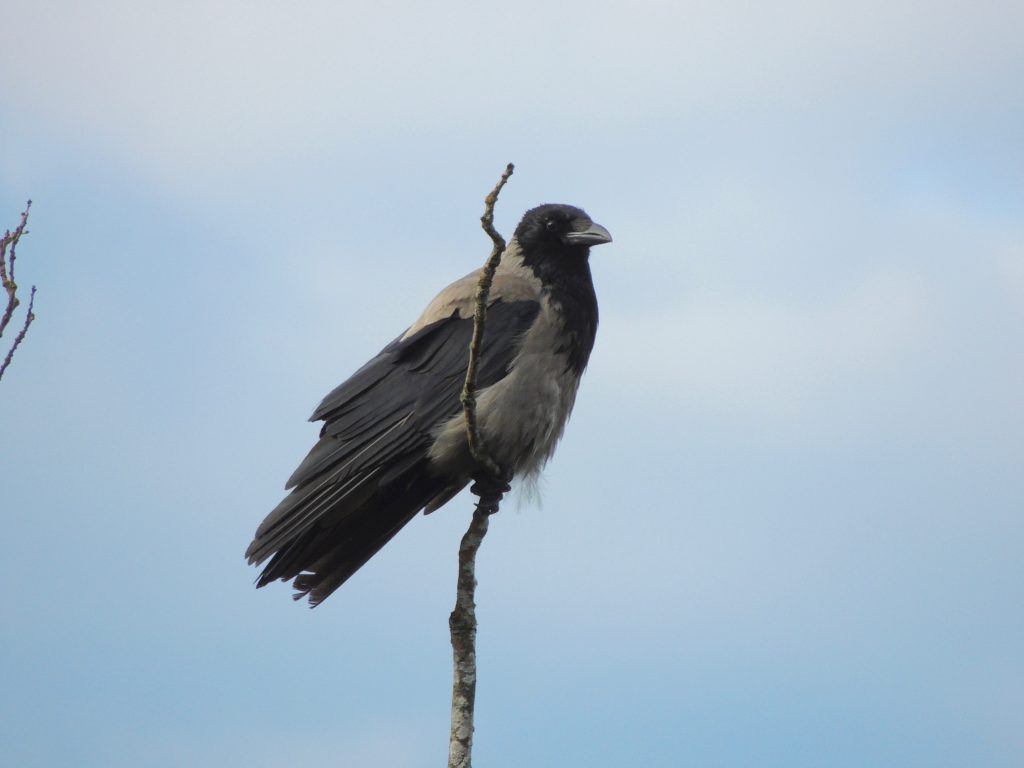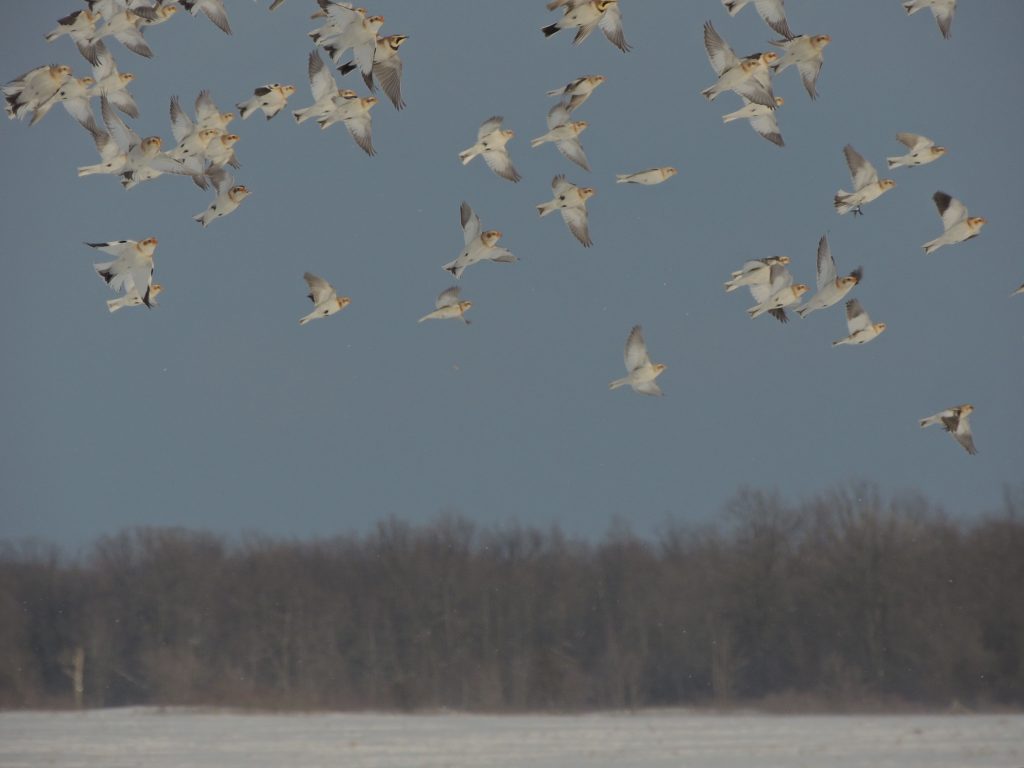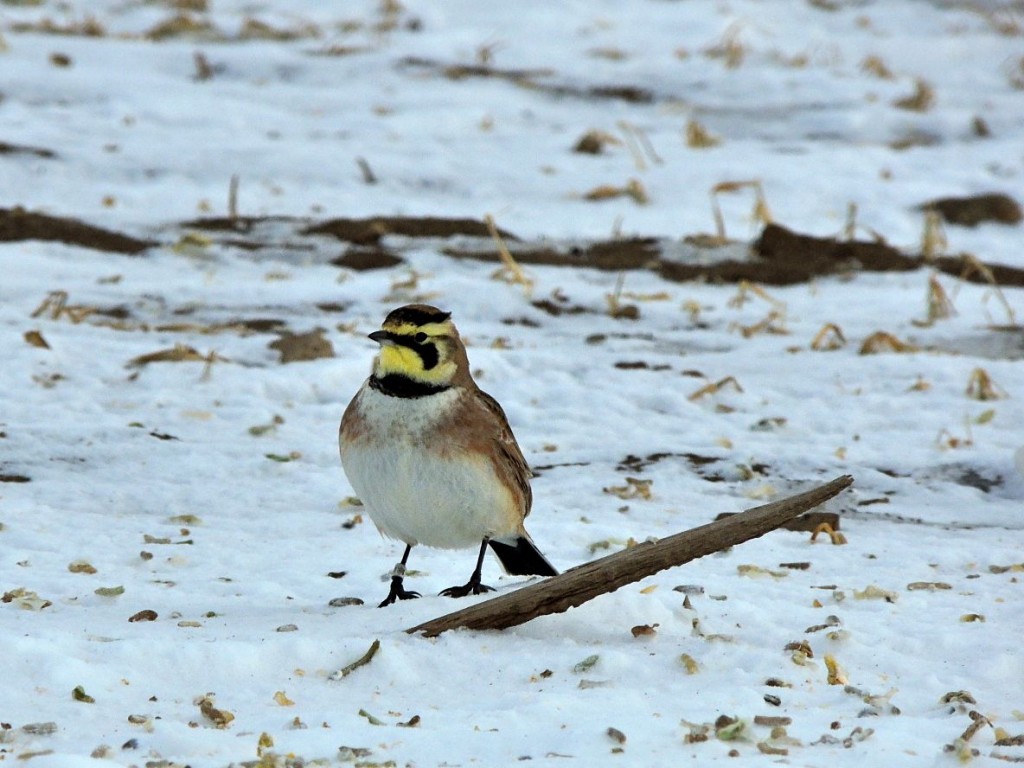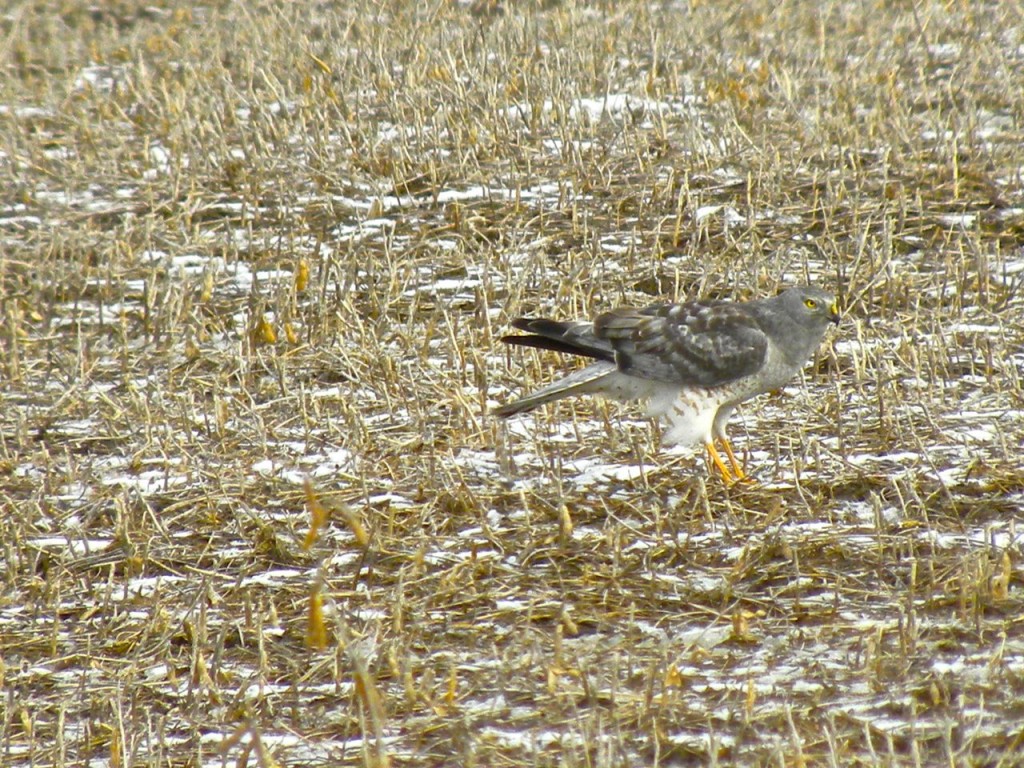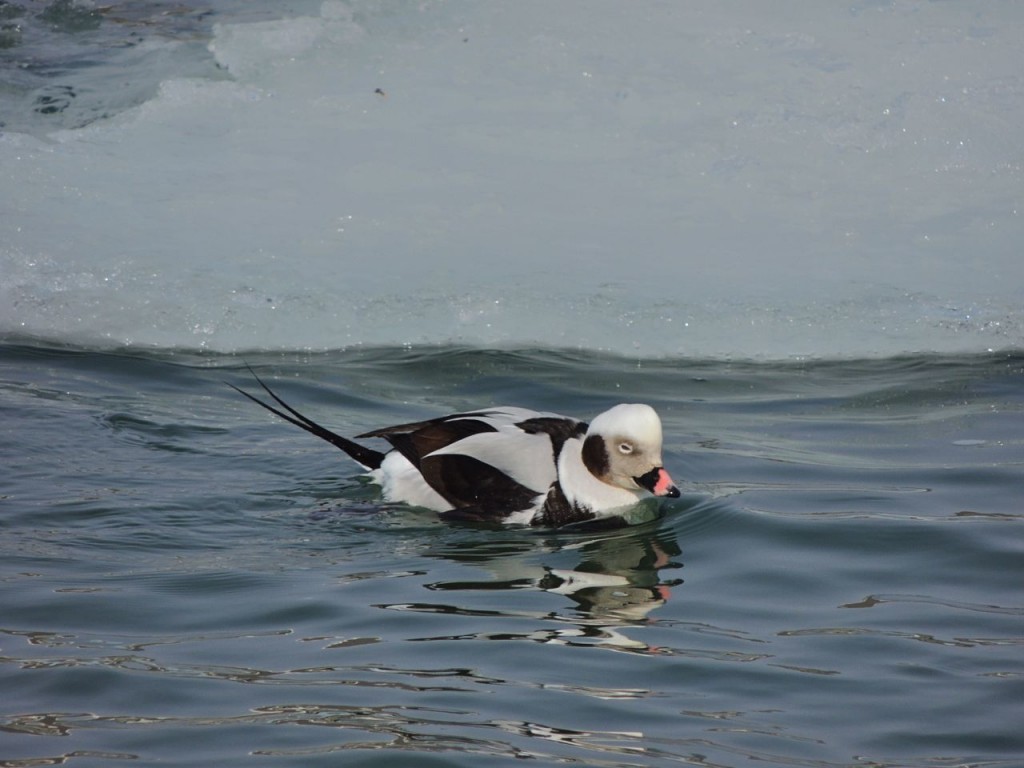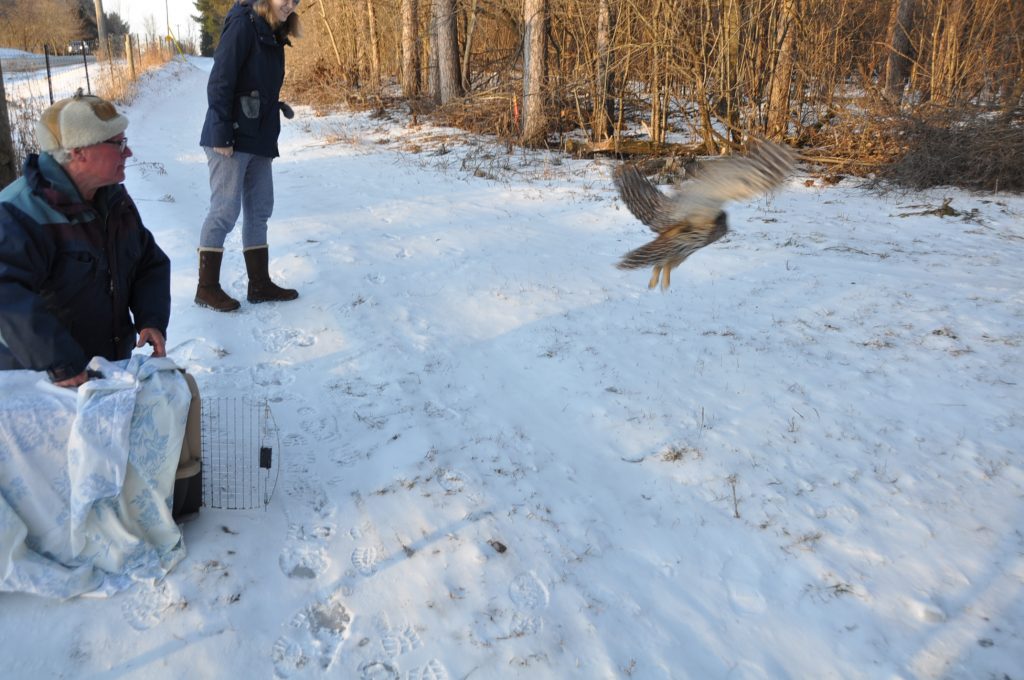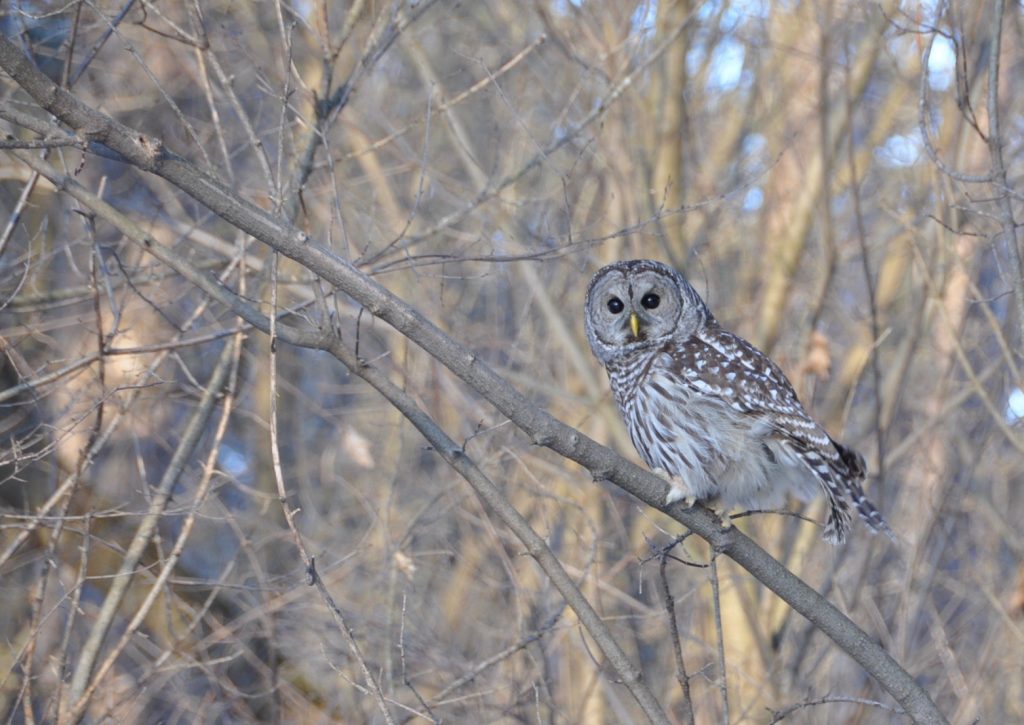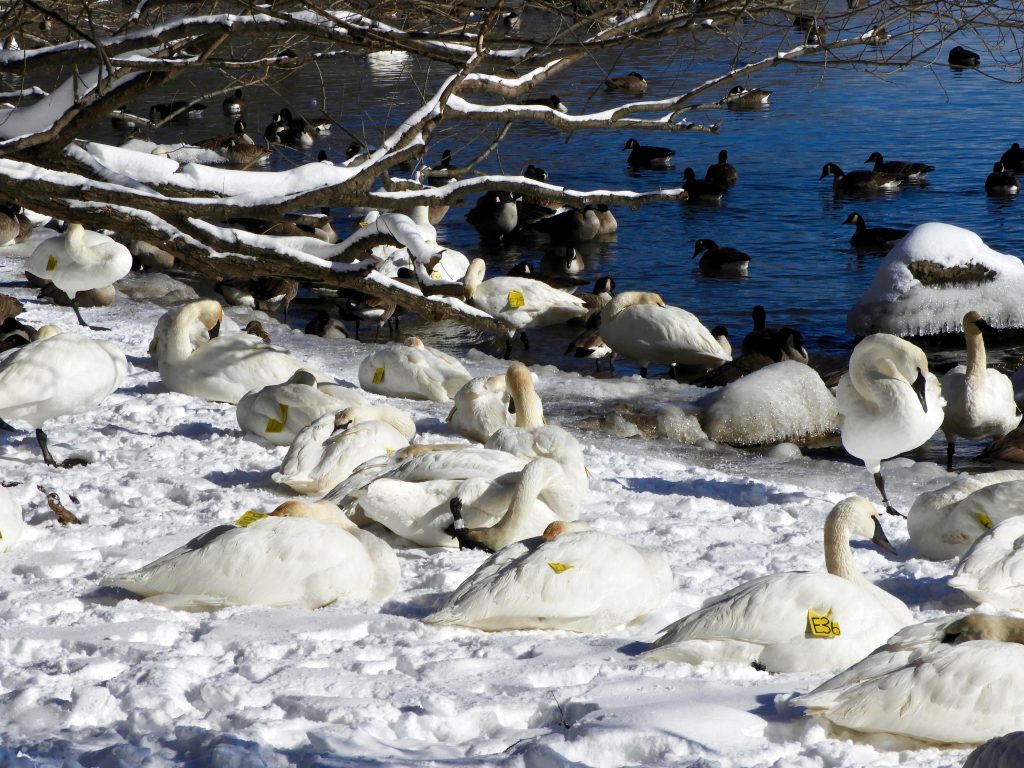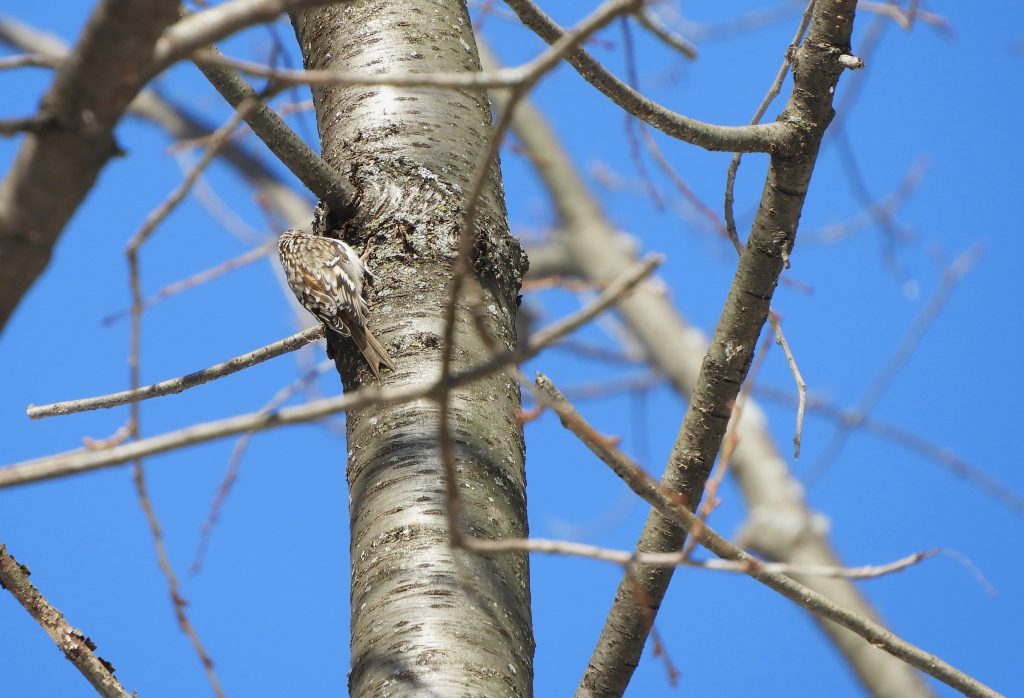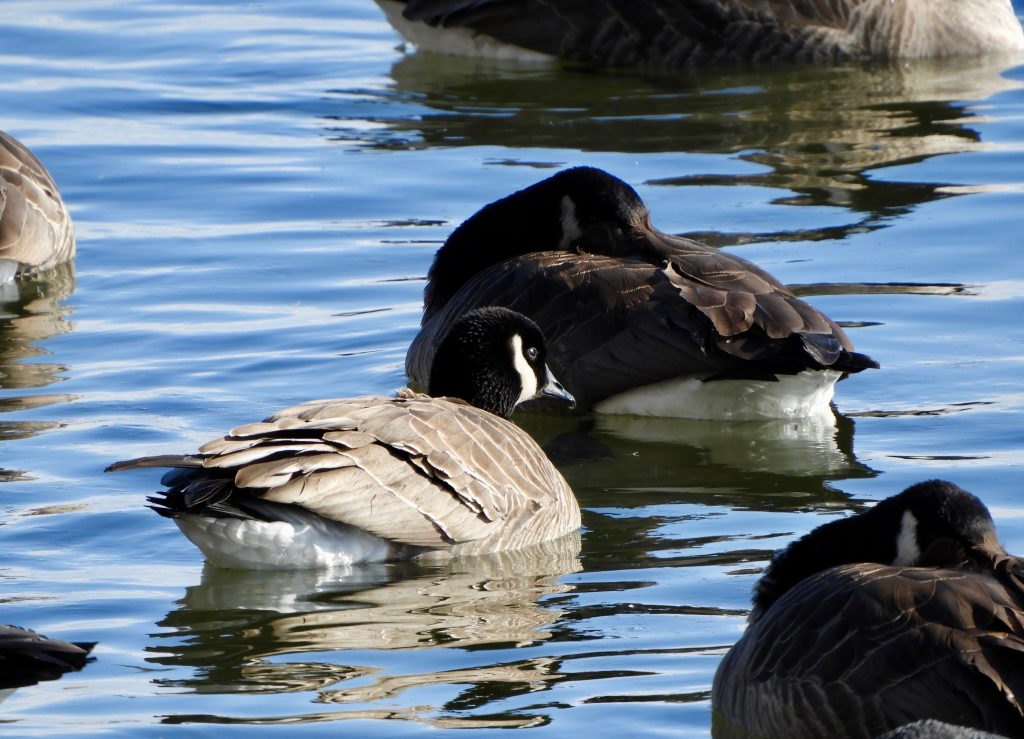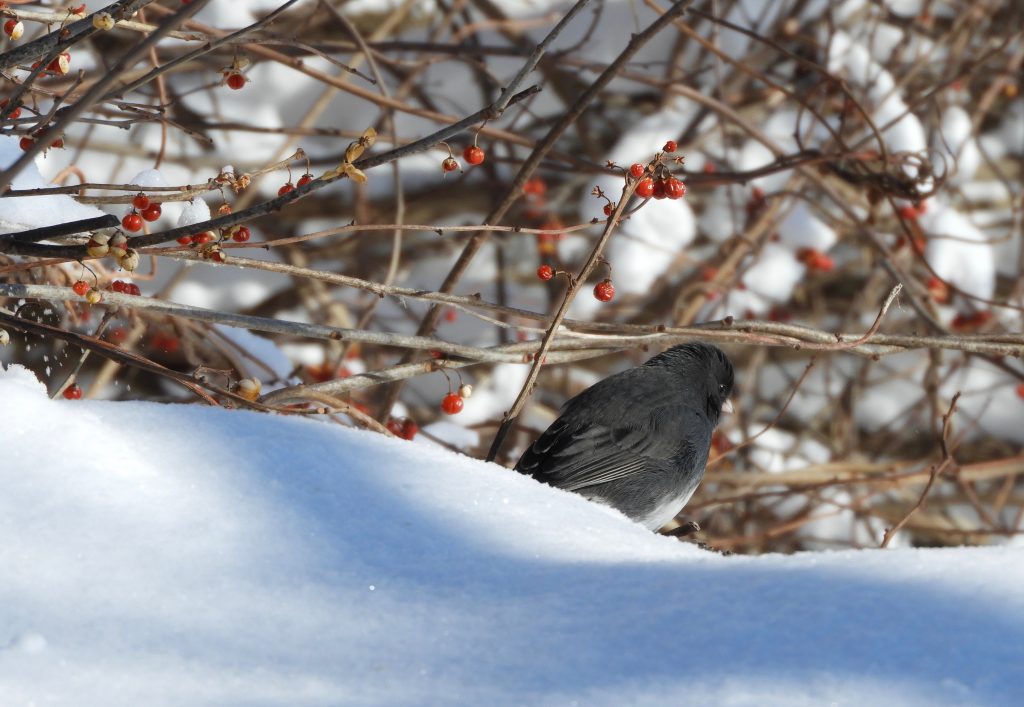March 31 2019. Royal Botanical Gardens, Hamilton, ON. When March delivers a dollop of hard weather, like last night’s wet snow and today’s cold winds, it’s not a betrayal; March, after all, wears winter’s colours with pride. It was with that cold comfort that a companion and I completed an early-season transect this morning.
The first half was into-the-teeth-of-the-wind cold, the sort of outing where you need to remind yourself that what you are doing is virtuous. Shoulders hunched, knuckles raw, we recorded about twenty species, all falling into the expected-at-this-time-of-year category. A hurried flypast by a Cooper’s Hawk, a newly returned Brown Cowbird and a single Tree Swallow were noteworthy on the good side of the ledger. On the other side, Double–crested Cormorants, twenty-four of them, were the forerunners of what by summer’s end might well be twenty-four hundred.
Any ambivalence about the day ended when we spotted an Eastern Phoebe, it was instantly My Bird of the Day, first one and then its partner. They had found something a flycatcher might like to eat in a relatively warm and sheltered corner where snow cover was patchy. It was evidently a very productive spot on such a raw day and they were not the only ones taking advantage of it. A bright Eastern Bluebird impressed us with its vibrant blue as it too sought food and occasionally perched close to us, a Winter Wren showed itself briefly, and pairs of White-breasted Nuthatches and Black-capped Chickadees hung around. I think they were hoping that we were there with hand-outs; we weren’t.
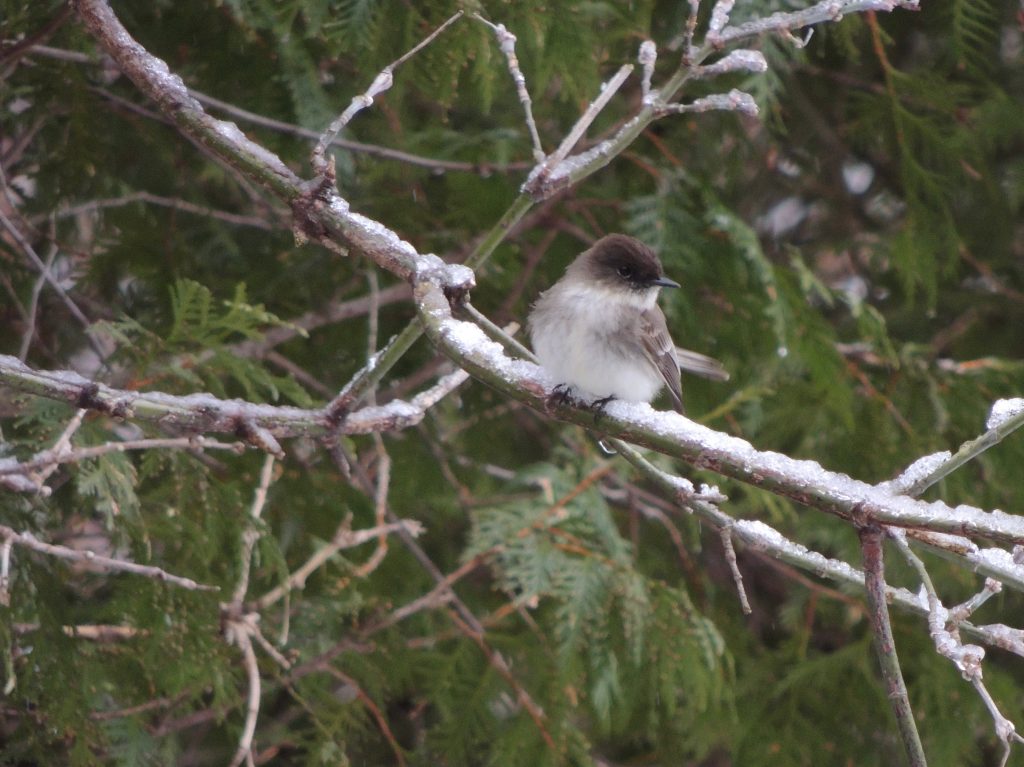
The swallow, cowbird and phoebes were all recent arrivals, perhaps from a day or two ago when the weather was warmer and more even-handed. Although swallows and phoebes are both insectivores and risk starvation in a prolonged cold spell, both species have always been early arrivals and continue to thrive – survive anyway.
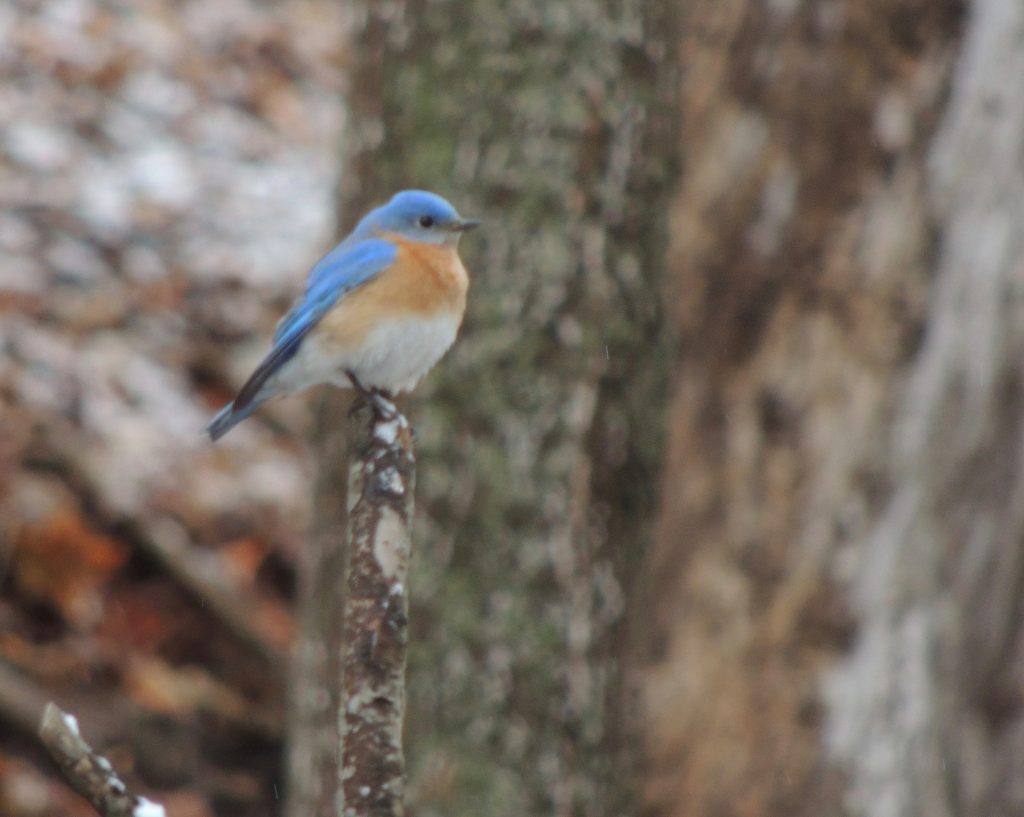
It was the Eastern Phoebes that caught my imagination, enough to be My Birds of the Day, and although cutely picturesque they can’t hold a candle to the Eastern Bluebird.
